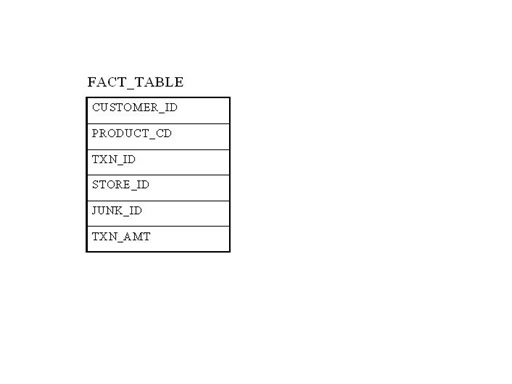In
data warehouse design, frequently we run into a situation where there are
yes/no indicator fields in the source system. Through business analysis, we
know it is necessary to keep that information in the fact table. However, if
keep all those indicator fields in the fact table, not only do we need to build
many small dimension tables, but the amount of information stored in the fact
table also increases tremendously, leading to possible performance and
management issues.
Junk dimension is the way to solve this problem. In a junk
dimension, we combine these indicator fields into a single dimension. This way,
we'll only need to build a single dimension table, and the number of fields in
the fact table, as well as the size of the fact table, can be decreased. The
content in the junk dimension table is the combination of all possible values
of the individual indicator fields.
Let's look at an example. Assuming that we have the following fact
table:
In this example, the last 3 fields are all indicator fields. In
this existing format, each one of them is a dimension. Using the junk dimension
principle, we can combine them into a single junk dimension, resulting in the
following fact table:
Note that now the number of dimensions in the fact table went from
7 to 5.
The content of the junk dimension table would look like the
following:
In this case, we have 3 possible values for the TXN_CODE field, 2
possible values for the COUPON_IND field, and 2 possible values for the
PREPAY_IND field. This results in a total of 3 x 2 x 2 = 12 rows for the junk
dimension table.
By using a junk dimension to replace the 3 indicator fields, we
have decreased the number of dimensions by 2 and also decreased the number of
fields in the fact table by 2. This will result in a data warehousing
environment that offer better performance as well as being easier to manage.







Use Full Info Dude....Keep on Posting.It's really Good.
ReplyDeleteThanks for Sharing..ravi